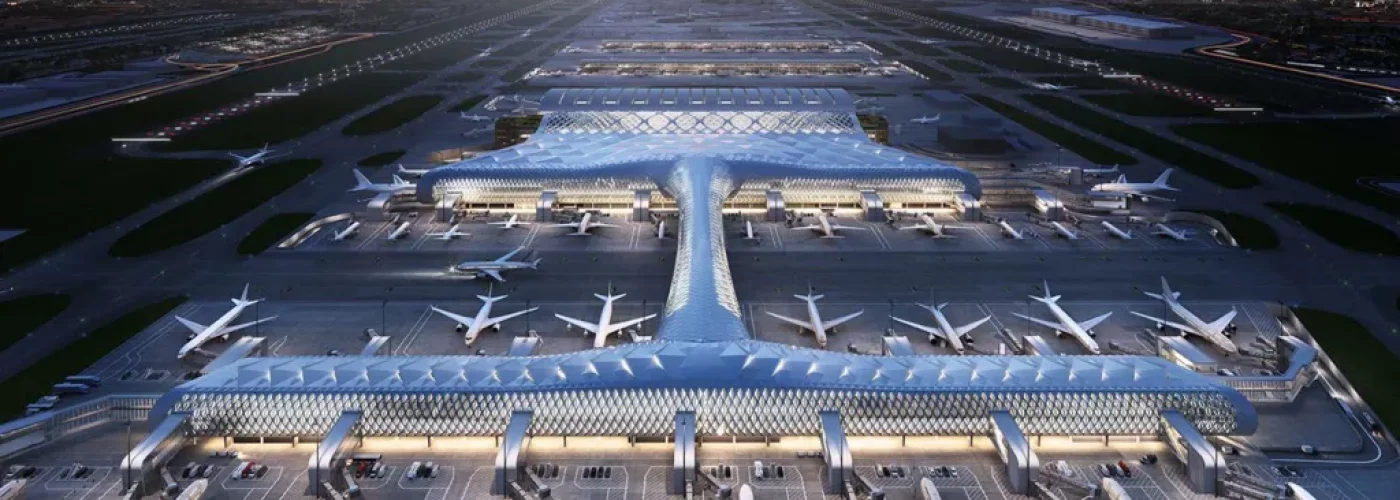Heathrow Airport has submitted its proposals for a third runway, promising to deliver a 100% privately funded expansion that could be operational within a decade.
The plan, which Heathrow describes as “shovel-ready”, aims to support the UK’s economic growth and secure its position as a leading global aviation hub.
The expansion would increase flight capacity by 50%, enabling up to 756,000 flights and 150 million passengers annually. It includes the construction of a 3,500-metre north-western runway, already backed by Parliament, a new terminal dubbed T5X, three satellite terminals, and significant upgrades to Terminal 2, while Terminal 3 would eventually be decommissioned.
The proposed £48 billion investment is split across three major areas: £21 billion for runway and airfield infrastructure, £12 billion for new terminal and stand capacity, and £15 billion for modernising existing terminals. Heathrow says this investment would be fully funded by private capital, contingent on government policy support and a regulatory framework that encourages growth while keeping passenger charges affordable.
Heathrow CEO Thomas Woldbye called on the Government to act swiftly, said: “It has never been more important or urgent to expand Heathrow. We are effectively operating at capacity to the detriment of trade and connectivity. With the right policy support and regulatory model, we are ready to mobilise this year.”
According to Heathrow, the third runway could boost the UK’s GDP by 0.43%, and enhance the airport’s role as Britain’s most valuable trading port, already facilitating over £200 billion in trade annually. It would also unlock tens of thousands of jobs across design, construction, and operations, with 60% of the supply chain spend going to businesses outside London and the South East.
Heathrow also reaffirmed its environmental commitments, promising to reach net zero by 2050. The airport has already reduced ground carbon emissions by 15% and flight-related emissions by around 10% since 2019. Its expansion plan includes increased use of Sustainable Aviation Fuel (SAF), further carbon-cutting measures, and improved noise and air quality standards.
The airport’s noise footprint has shrunk by 41% since 2006, and all surrounding air quality monitors are reportedly within legal limits. A redesigned airspace under the new expansion would provide more reliable and predictable flight paths for communities.
An expanded Heathrow would offer at least 30 new daily routes, improved domestic connectivity, and more flight options to key global destinations. The new infrastructure is expected to ease congestion, reduce delays, and offer passengers more competitive fares through greater airline choice.
Plans also include upgrades to public transport, such as enhanced rail access, cycling and walking routes, and improved road links. Heathrow is proposing a new tunnel and two dedicated parkways, alongside enhancements to what is already the UK’s busiest bus and coach station.
Heathrow is seeking government feedback by September to meet the current expansion timeline. If supported, the airport plans to begin formal consultation with airlines, communities, local authorities, and stakeholders in 2026, with a planning application scheduled for 2028.
The expansion is backed by national and regional Chambers of Commerce, trade unions, educators, and construction firms, who see it as a transformative opportunity for both economic and employment growth across the UK.
Without expansion, Heathrow warns, the UK risks falling behind international competitors, such as Paris, Frankfurt, and Amsterdam, all of which have room to grow. Currently, Heathrow connects UK exporters to 92% of the global economy via direct flights.
Building, Design & Construction Magazine | The Choice of Industry Professionals





